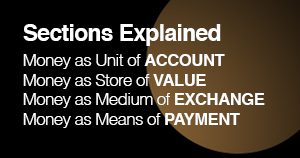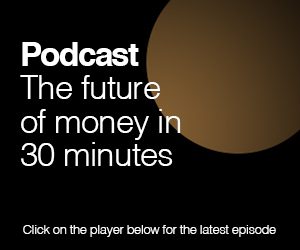Tech giant Facebook is targeting a multi-trillion dollar pool of money market fund assets as it seeks to launch its new digital currency, Diem, in the US.
Yesterday Facebook announced that it is shifting its focus from Switzerland to the US in its search to launch a new stablecoin called Diem (formerly Libra).
A stablecoin is a representation of a traditional (fiat) currency that can be transferred easily, instantaneously and at low-cost across the mobile devices that are increasingly used for digital payments.
Stablecoins can also be used in innovative, mobile-based financial applications by means of so-called smart contracts.
Facebook’s decision to refocus its digital currency efforts in the US are a volte-face from earlier plans to run its stablecoin business out of Switzerland.
In 2019, Facebook launched the Libra Association (now Diem Association) in Lausanne to pursue its goals.
The Association was set up as a not-for-profit Swiss foundation with 28 signed-up members, including Facebook and firms from across the payments, technology, telecoms, blockchain, venture capital and non-profit sectors.
Yesterday, Diem Networks US, a unit of the Diem Association, said it planned to develop a blockchain-based payment system that would allow for the real-time transfer of dollar stablecoins between those holding a version of Facebook’s digital wallet (called Novi).
Diem said it would register as a money services business with the US Treasury’s Financial Crimes Enforcement Network (FINCEN), which aims to combat domestic and international money laundering, terrorist financing and other financial crimes.
Competition is hotting up to develop the dominant digital version of the US dollar
California-based Silvergate Bank, which is widely used by US-based cryptocurrency and fintech firms, will issue the Diem dollar stablecoin and manage the stablecoin’s reserve assets, Facebook said.
The launch date of Facebook’s new dollar stablecoin is unclear, however.
The pivot in the tech firm’s stablecoin plans comes as competition is hotting up to develop the dominant digital version of the US dollar, the world’s major reserve currency,.
While the US central bank is so far biding its time on plans to launch its own digital dollar, non-regulated or semi-regulated private stablecoins have stepped in to fill the gap.
The assets of digital dollar tokens like Tether (USDT) and Circle (USDC) have soared since the coronavirus pandemic prompted a jump in the share of payments conducted digitally.
Tether’s assets, for example, have increased from $4bn to over $58bn in little more than a year. USDC’s assets have grown from under $1bn to $16bn over the same period.
Tether and USDC have so far provided no or limited information on their reserve backing, however.
Under a February legal settlement with the New York Attorney General, which had accused Tether of lying in the past about its reserves, Tether committed to increasing its levels of transparency.
It said it would publish the categories of assets backing its stablecoin, and whether any category constitutes a loan to an affiliated entity, by May 20 and for a period of two years.
Circle says its USDC stablecoin’s reserves ‘are bound by permissible investment rules under US state banking supervision and regulation of money transmission companies’, but offers no further information.
With its proposed new stablecoin, Facebook is likely also targeting the $4.5trn held in dollar money market mutual funds.
Dollar money market mutual funds’ assets are set to rise after some US banks recently took the unusual step of encouraging clients to move funds out of the banks’ deposit accounts.
The continuing rise in stablecoin assets poses a headache for financial regulators
According to the Financial Times (subscription required), the US banks took this step after the Federal Reserve decided in March to end the looser capital rules for banks that had been put in place early in the pandemic.
The coronavirus-related regulatory relief had allowed the banks to exclude holdings of US Treasuries and cash kept in reserve at the central bank—used by banks to hedge their own liabilities to depositors—from their assets when calculating the supplementary leverage ratio (SLR).
The SLR is a key post-2008 constraint on banks’ balance sheet size.
According to Charles Kahn, a professor at the University of Illinois and Manmohan Singh, a senior economist at the IMF, the continuing rise in stablecoin assets poses a headache for financial regulators.
Writing in Risk magazine (subscription required) in February, Kahn and Singh said that stablecoins pose a bigger challenge for policymakers than free-floating cryptocurrencies like bitcoin and ethereum.
“To maintain a stable value, US dollar stablecoins must be backed with a riskless asset, such as short-term US Treasury obligations,” Kahn and Singh said.
“This introduces into the economy a privately established dollar-denominated currency that is not backed by reserves at the US Federal Reserve. Their appearance on the scene requires a rethink of the basics of monetary policy,” they said.
Kahn and Singh suggested that stablecoin issuers be granted direct access to the US central bank’s reserves and membership of the Fed’s real-time gross settlement (RTGS) system, the main wholesale payments network.
Otherwise, they said, the increasing demand by stablecoin issuers for safe reserves, in the form of government bonds, would likely distort the wider market for high-quality collateral, causing destabilising knock-on effects throughout the financial system.
Sign up here for the New Money Review newsletter
Click here for a full list of episodes of the New Money Review podcast: the future of money in 30 minutes
Related content from New Money Review
US turns to stablecoins to speed up payments
US struggles to speed up payments









